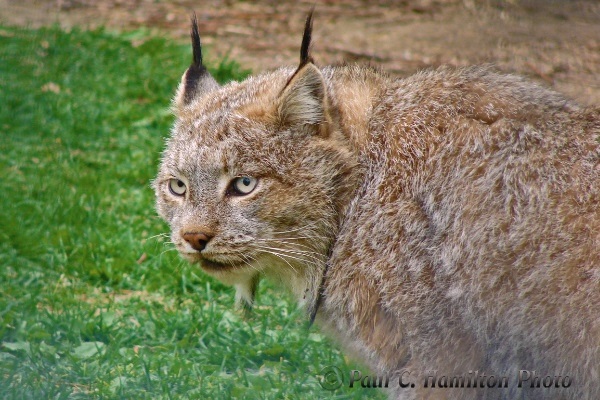(Lynx canadensis) LYNX, CANADIAN
Size of Jasper Alberta's Lynx
- Mass: 5.1 to 17. kg
Length: to 40 in. (1 m) - Wildlife living area: tundra, temperate forest & rainforest
Status: threatened.
Range: Major populations of Canadian lynx are found throughout Canada, in western Montana and nearby parts of Idaho and Washington. There are small populations in New England and Utah and possibly in Oregon, Wyoming and Colorado as well. - The coloration of lynx varies but is normally yellowish brown. The upper parts may have a frosted, gray look and the underside may be more buff. Many individuals have dark spots. The tail is quite short and is often ringed and tipped with black. The fur on the body is long and thick. The hair is particularly long on the neck in winter.
- The triangular ears are tipped with tufts of long black hairs. The paws are quite large and furry, helping to distribute the weight of the animal when moving on snow.
Where does the Lynx live?
Details on the Jasper Lynx
Canadian lynx have been exploited for furs since the seventeenth century. With restrictions on trade in furs of large cats in the 1960's and '70's, and subsequent reduction of ocelot and margay populations by fur trappers, increased attention has been focused on the pelts of Canadian lynx. However, it seems that the greatest pressure on populations of lynx remains the size of hare populations, not trappers. Lynx help control populations of small mammals, such as snowshoe hares and voles, that are considered agricultural or silvicultural pests.
Rounded feline tracks are lack obvious claw marks and are about 3 - 4 in. (8 10 cm) wide with the front paw being slightly larger.

Lynx Tracks

